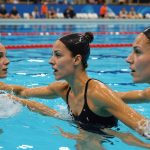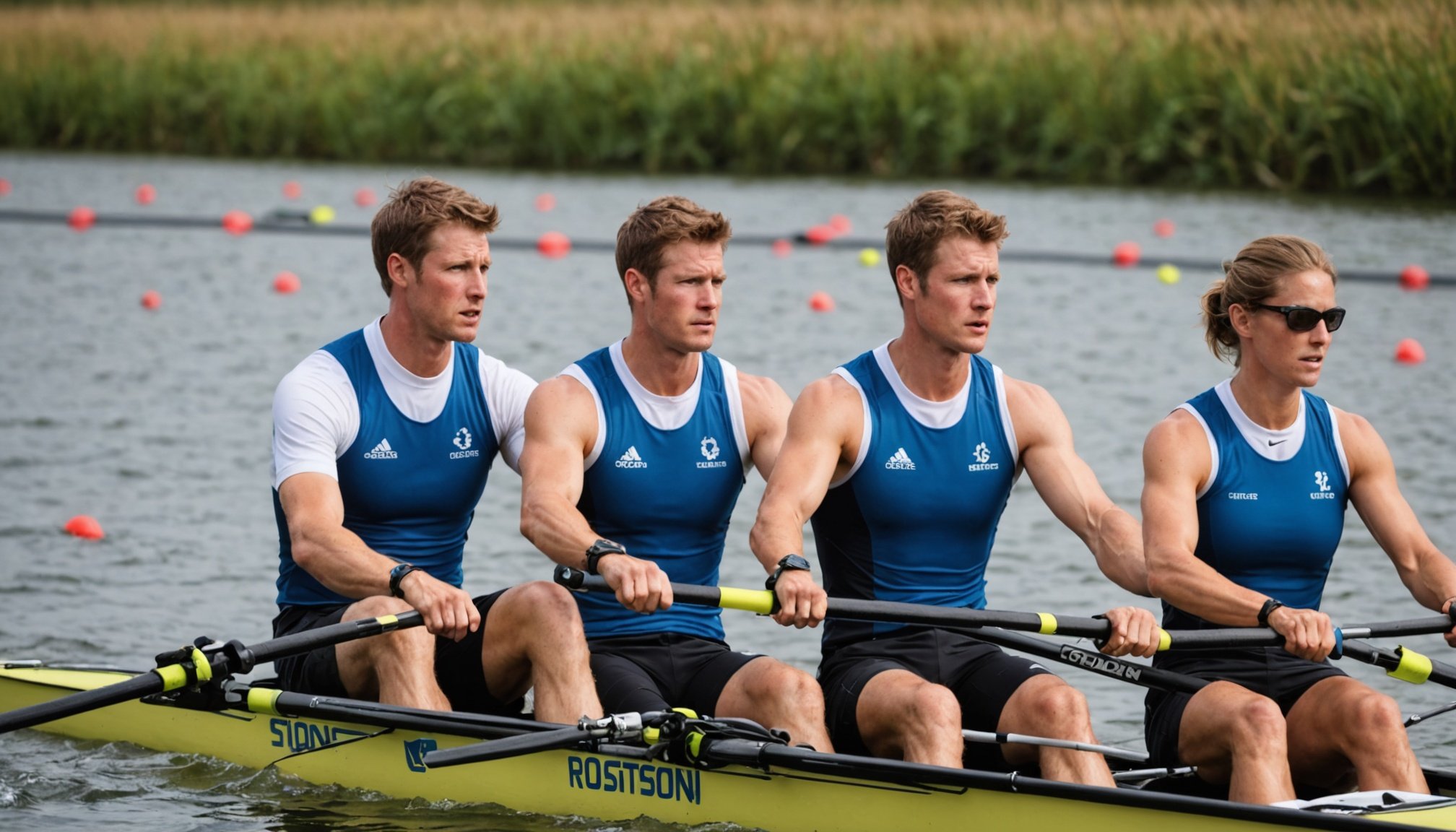Importance of Team Cohesion in Rowing
Understanding the benefits of team bonding in rowing can significantly enhance performance. A rowing team operates like a well-oiled machine, relying on harmonised movements and mutual trust to propel through the water. Team cohesion, therefore, plays a critical role. It creates a strong foundation for effective communication, synchronization, and a shared focus on winning.
Beyond mere performance, there are significant psychological benefits to having strong team bonds. Camaraderie in sports boosts morale, fosters resilience, and motivates individuals to push past challenges. When a team is united, each member feels supported, enhancing determination and a sense of belonging.
This might interest you : Championing Sustainability: Innovative Eco-Friendly Approaches for UK’s Sports Facilities to Minimize Environmental Footprint
In real life, successful rowing teams exemplify these principles. For instance, the British rowing team famously won at the Olympics due to their impeccable team cohesion. Their story illustrates how combined efforts and trust can lead to remarkable achievements. The synchrony of their strokes was not merely physical but also a testament to deep-rooted trust and understanding. Emphasising rowing team performance through team unity can thus transform potential into triumph.
Effective Team-Building Activities for Rowing Crews
When it comes to fostering synergy within rowing crews, team-building exercises prove invaluable. These activities not only promote unity but also elevate rowing activities by enhancing teamwork and communication. Let’s explore some effective team-building exercises tailored for rowing crews.
Outdoor Adventure Challenges
Outdoor adventure challenges serve as exhilarating physical challenges that foster cooperation and teamwork. These activities often involve navigating complex terrains or participating in challenging sports, pushing crews to rely on each other’s strengths. The engagement levels observed during these challenges are notably high, encouraging communication and camaraderie.
Competitive Team Exercises
Competitive exercises, such as inter-squad races or strength contests, can bolster crew unity as members work towards a common goal. These activities not only improve physical prowess but also reinforce the importance of strategy and trust in achieving success. Many UK rowing clubs have experienced significant improvement in team cohesion through such competitive pursuits.
Trust-Building Workshops
Trust-building workshops focus on enhancing communication skills and understanding within the team. These sessions often include scenarios where members must rely on each other to solve problems, thereby strengthening trust and mutual respect. Implementing these exercises has shown positive outcomes in crew dynamics, with UK clubs reporting heightened team performance and unity.
Enhancing Communication Within the Crew
Robust communication skills are pivotal to successful team dynamics in rowing. Seamless transitions and coordinated efforts rely heavily on clear exchanges of information. Managing both verbal and non-verbal communication is vital for improving overall performance. Subtle gestures and signals must align with vocal cues to maintain consistent row tempo.
Importance shines through in competitive settings. Precision and split-second decisions often determine success. Thus, achieving open communication channels within the team becomes a priority.
To facilitate this, several techniques can be employed. Utilizing check-ins and regular team meetings aids alignment. Incorporating feedback sessions creates an environment where constructive criticism refines techniques. Moreover, fostering a supportive atmosphere helps each member feel comfortable sharing insights.
Notable UK rowing clubs have thrived through communication enhancement initiatives. Their experiences underline the success derived from investing in comprehensive training programs. Through workshops and dedicated sessions, these clubs elevated their communication practices, directly reflecting in improved performances.
Case studies reveal that effective feedback mechanisms are critical. Adapting communication strategies based on real-time assessments fosters resilience and adaptability among team members. These initiatives bolster the crew’s capability to perform coherently amid pressure, enhancing both team dynamics and results.
Organizing Social Events to Foster Relationships
Fostering strong bonds within a rowing team extends beyond the water. Social activities play a crucial role in team bonding events, enhancing team spirit and promoting a sense of community. Let’s delve into how these social activities can solidify relationships and improve team dynamics.
Group Outings and Recreational Activities
Group outings offer an informal platform for team members to connect outside of their regular rowing activities. Whether it’s a casual dinner or a sporting event, these gatherings facilitate personal interactions essential for building trust. Activities like hiking or team sports encourage teamwork in a fun setting, enhancing cohesion and camaraderie.
Celebrating Achievements and Milestones
Recognising achievements with celebrations like award nights or milestone parties can significantly boost morale. These events provide opportunities for shared joy, reinforcing the team’s success and enhancing members’ motivation. Celebrating together also underscores mutual respect and admiration, fostering deeper connections.
Involvement in Community Events
Participating in community events can elevate a team’s visibility and offer bonding opportunities. Engaging in charity runs or local festivals supports community building and strengthens the team’s identity. It allows members to unite under a common goal, enriching their team bonding and enhancing overall group dynamics.
Psychological Insights into Fostering Team Cohesion
Understanding the psychological factors that influence team dynamics is crucial for fostering a committed and motivated rowing team. Implementing techniques that promote psychological safety can greatly enhance team interaction. When athletes feel safe to express their thoughts without fear, it fosters an open environment, leading to better team dynamics.
Motivation in sports is another essential element. To ensure all team members are consistently motivated, it’s vital to establish clear goals and provide consistent feedback. Tailoring these motivational strategies to individual needs, while maintaining a focus on team objectives, enhances commitment. Techniques such as visualisation exercises and goal-setting workshops can be extremely beneficial.
Applying insights from sports psychology can strengthen a rowing team’s fabric. For example, practicing resilience-building exercises can prepare teams for both performance challenges and interpersonal conflicts. Positive reinforcement and celebrating small victories also bolster enthusiasm and reinforce a sense of achievement within teams.
Real-life applications of these insights show notable improvements in team cohesion. UK rowing clubs that have integrated psychological coaching into their routine report stronger bonds and improved performance, highlighting the profound effect of addressing the mental aspects alongside physical training.
Evaluating the Impact of Team Bonding Strategies
In rowing, measuring success in team bonding strategies is vital. Effective performance evaluation helps identify the impact of team bonding strategies on crew dynamics. Incorporating key metrics allows teams to gauge progress and refine their approaches continually.
Metrics for Success involve assessing improvements in rowing team performance and the strength of interpersonal relationships. Metrics such as race times, communication efficiency, and member satisfaction surveys can provide valuable insights. Regular evaluations ensure that each strategy aligns with the team’s goals and enhances overall performance.
Gathering Feedback from Crew Members is essential for refining bonding strategies. Engaging members in open discussions allows them to express their experiences and suggest improvements. Constructive feedback fosters camaraderie in sports, as it shows the team’s commitment to inclusion and growth.
Implementing a Continuous Improvement Strategy ensures ongoing enhancement of bonding efforts. By analysing collected data and feedback, teams can adapt their strategies to meet evolving needs. This proactive approach ensures that bonding activities remain relevant and effective, nurturing a cohesive and motivated rowing team.
Empowered by these insights, notable UK clubs have achieved remarkable improvements, setting benchmarks for others to follow.











